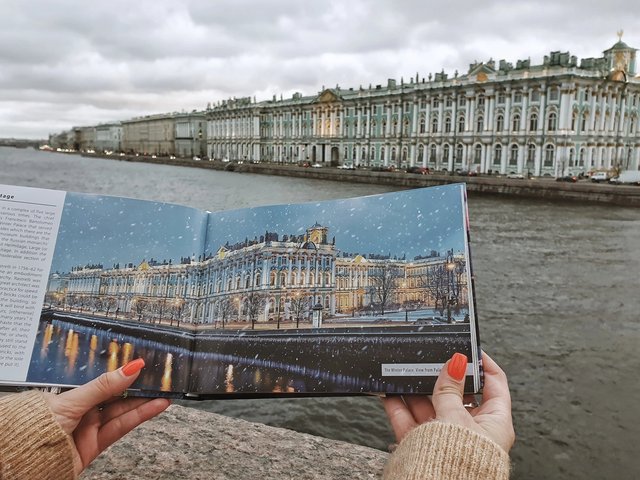The Russian government is blocking payments to the Hermitage for completing the museum’s ambitious Open Storage Facility, which is intended to be accessible to visitors. Although the vast six-floor building in the northern outskirts of St Petersburg at Staraya Derevnya has been built, the interior has not yet been fitted out. Once finished, it will house furniture, paintings from the reserve collection, frescoes and carriages, as well as restoration workshops.
The Hermitage has already incurred a debt of $7 million, since the government has failed to hand over money allocated for the public store because of financial shortfalls. “For several years we were promised funds in the State budget, so we ordered work to continue, but the money never came and we got into debt,” director Professor Mikhail Piotrovski told The Art Newspaper last month. Money to cover the debt has been promised this year and it is currently being discussed in Parliament. If the funding is approved, the new building could open to visitors in 2003. However, the fear now is that with the conflict in Afghanistan extra money may go to the military budget.
The Hermitage’s other major project is expansion into the General Staff Building, across the square from the museum. Originally Professor Piotrovski had hoped to find a commercial partner which would develop an up-market hotel as part of the scheme, to help fund the galleries, but this now looks increasingly difficult because of restrictions on the alteration of the historic building.
More feasible are the planned shops and restaurants, as well as a large internet café, where visitors will be able to email images of Hermitage artworks to friends, instead of sending postcards. Among the collections which will be displayed in the former military building are the Impressionist and Post-Impressionist paintings once owned by Morozov and Shchukin, as well as porcelain and 19th- and 20th-century decorative arts.
Work on the General Staff Building is being funded with money from the Guggenheim, and it is hoped that the new joint gallery in Las Vegas will raise $1-2 million a year, although Professor Piotrovski admits that the sum is less certain following 11 September and the Guggenheim has such severe financial problems that it is letting 70 staff go. It is also expected that the St Petersburg project will receive World Bank assistance which is going for the rehabilitation of the city.
Bottom line
The Hermitage’s latest financial accounts, just published, show that last year the state provided 45% of its income, or $14 million. An additional $17 million came from other sources, with nearly $3 million of this from travelling exhibitions abroad. The Hermitage’s total revenue was $31 million (433 million roubles) and although labour costs are relatively low in Russia, this is a modest sum for one of the world’s largest museums, with nearly three million objects.
The Hermitage had 2,395,000 visitors in 2000, below the level of the Soviet era (when it was around four million), but nevertheless up on recent years. Of these, 2,087,000 were Russian and 309,000 from abroad. Numbers were boosted by three major religious exhibitions which attracted huge crowds: 570,000 visitors for Islam (“Earthly art-heavenly beauty”), 500,000 for Orthodoxy (“Sinai, Byzantium, Rus”) and 300,000 for Armenia (“Treasures of the Armenian Church”).
London outpost
The Hermitage Rooms in Somerset House had a winner with their inaugural show on Catherine the Great, which attracted 197,000 visitors. Each visitor’s ticket contributed £1 to the St Petersburg museum (“the Hermitage pound”), and Professor Piotrovski revealed that this will pay for the renovation of the British galleries, which reopen in June. Following Catherine the Great, “French drawings and paintings from the Hermitage: Poussin to Picasso” opened in November, and runs until 3 March.
However, the future now looks difficult, mainly because of the slump in tourism following 11 September and the problems of securing sponsorship. In a leaked memorandum, Hermitage Rooms chairman Lord Rothschild warns that “as currently constructed, we have an uneconomic model.” This means that “hard and difficult decisions” will be needed, such as the postponement of exhibitions.
“Homage to the horse” had been scheduled to follow French drawings in April, but this costly show has now been delayed and will be replaced by a less expensive exhibition. Future shows under discussion include “Paintings, passion and politics in the Walpole Collection”, Peter the Great, and works by Rubens, although the schedule will be determined by sponsorship prospects. Meanwhile work on the museum’s Amsterdam outpost is proceeding, with the Hermitage on the Amstel due to open in 2003.
2000 Hermitage accounts
(in million roubles)
Expenditure:
Government Other Total
Payroll 35 35 71
Acquisitions 0 11 11
Other 74 65 138
Total current 109 111 220
Capital 89 24 213
Grand total 198 235 433
Income
Government grant 193
Admission fees 84
Payments for travelling exhibitions 84
Donations 43
Other 22
Total 427
Source: Tables in Hermitage annual report for 2000, pp. 98-9. Figures are rounded, and tables may not add up exactly. The approximate average exchange rate in 2000 was 30 roubles = $1.
How big are the Hermitage collections?
Sculptures 13,000
Paintings 17,000
Applied art 273,000
Works on paper 628,000
Archaeology 719,000
Coins and medals 1,119,000
Other 139,000
Total 2,908,000


